The Riotoro Onyx Power Supply Review: 650W & 750W Tested
by E. Fylladitakis on March 23, 2017 10:00 AM ESTExternal Appearance
We should start by mentioning that, with the exception of the stickers and one extra connector at the front of the 750W model, there are no physical differences between the 650W and the 750W version of the Onyx. Externally, the Riotoro Onyx is a simple-looking PSU. The chassis has been sprayed with a matte black paint and the finish is good, but the paint itself is highly prone to fingermarks.
Stickers with the company logo, the series and the power rating of the PSUs can be found on the sides of the chassis. One large sticker with the electrical certifications and specifications of the PSUs take up most of the top. A metallic round badge with the company logo decorates the center of the finger guard, right above the fan’s engine.
The front side of the PSU is mostly plain, with the connectors for the modular cables taking about a third of it. It can be noticed that the 650W version has one connector less than the 750W version, which is meant for the extra Molex or SATA cable. Note that both units have two PCI Express cable connectors, but the 650W version offers only two PCI Express 6+2 pin connectors instead of four.
Internal Design
The similarities of the two PSUs are internal as well, with both units using exactly the same fan for cooling. It is the Yate Loon Electronics D12SM-12 fan, a simple 120 mm model with a sleeve bearing engine. These fans tend to be relatively quiet but are not specifically reputed for their longevity.
Both of the units are based on exactly the same platform, and the OEM behind it is the Chinese company 'Great Wall'. Great Wall is not a regular manufacturer into the North American and European markets, but a few companies have entrusted their middle range units to them, including OCZ and Corsair. Since some of Riotoro’s employees come from Corsair, it is no surprise that they approached Great Wall to be the OEM of their own units.
Other than the ratings of the used components, there are no vital differences between the two units. The main difference is the size of the passive PFC components, the filtering inductor and the two capacitors: where the 650W model employs two Nippon Chemi-Con 450V/180μF capacitors, the 750W model uses two Rubycon 450V/220μF capacitors. On the secondary side both units are using a mix of Rubycon and Nippon Chemi-Con electrolytic capacitors. Nippon Chemi-Con supplies all of the solid-state capacitors as well.
Riotoro Onyx 750W - Internal View
The platform is a relatively simple design, with a half-bridge primary inversion on the primary side of the transformer. On the secondary we can clearly see the DC-to-DC converters for the minor rails. These are not cutting-edge technologies but, taking into account the quality of the used components as well, the Onyx units should be getting a better efficiency certification, suggesting improper optimization on the OEM’s behalf. The heatsinks are of a reasonably large size, considering the efficiency and power ratings.
Riotoro Onyx 650W - Internal View


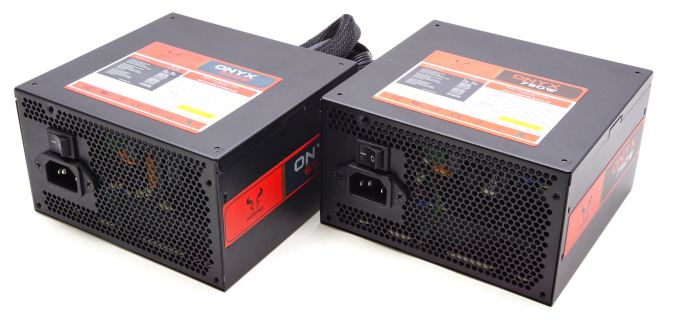
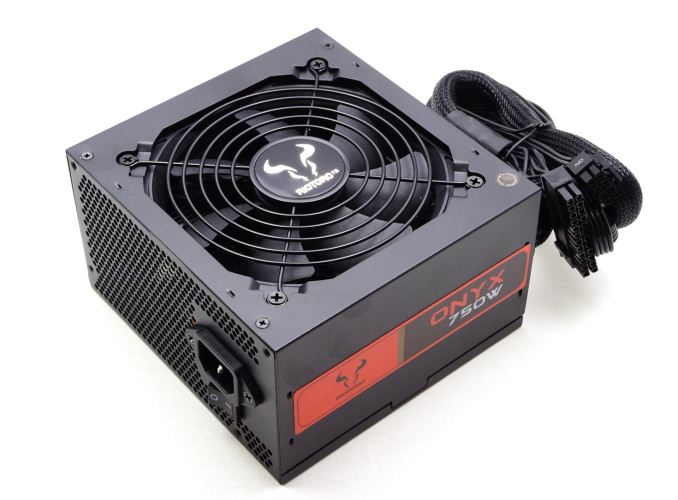
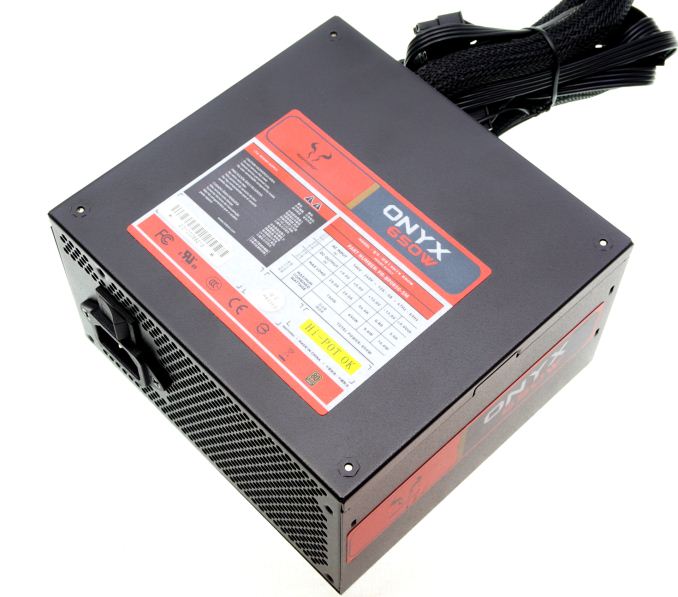
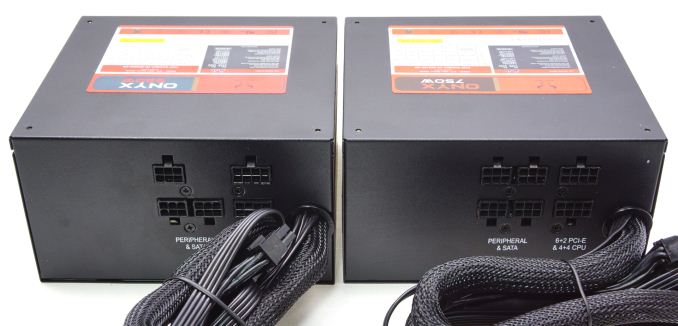
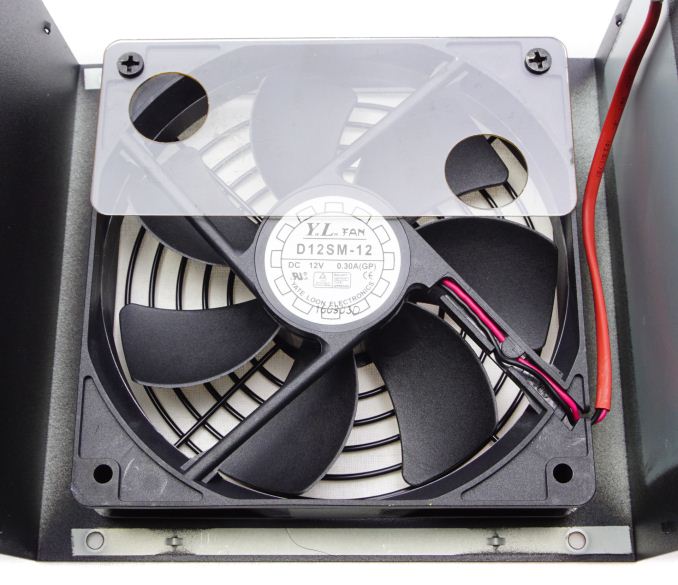
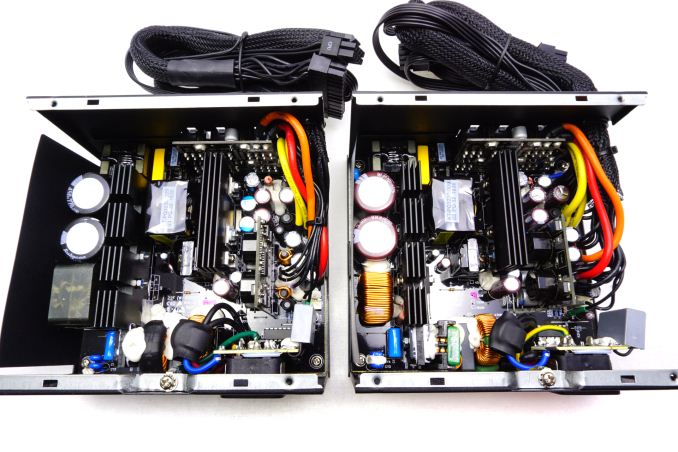
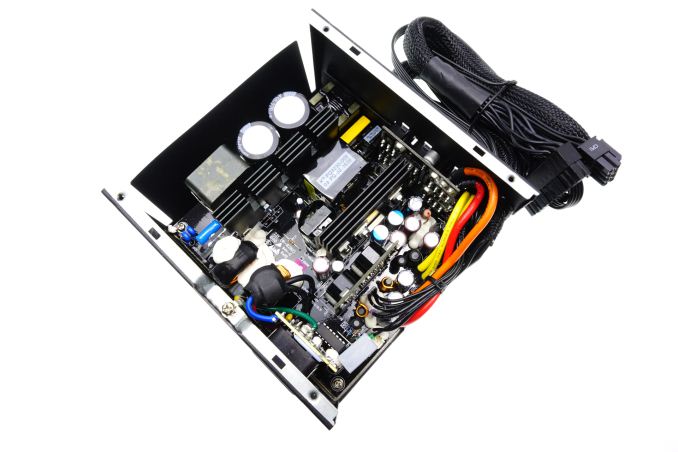
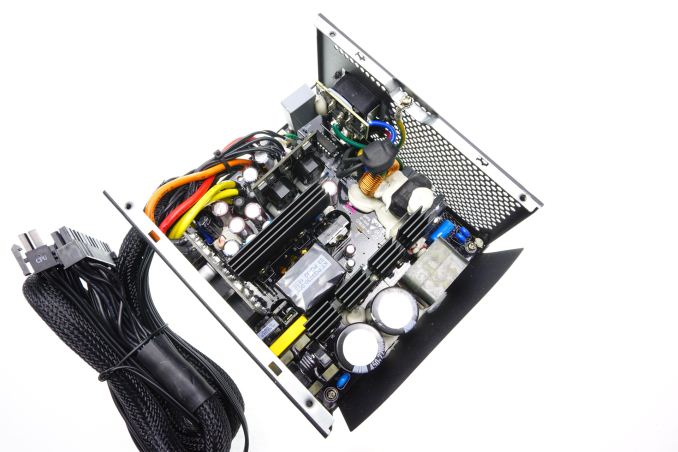
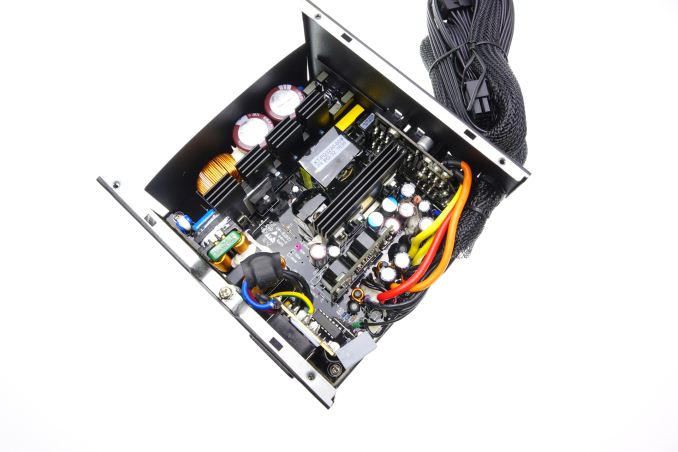
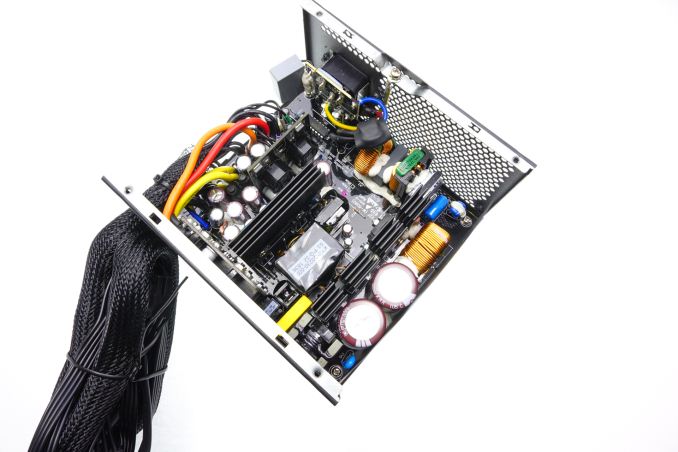








32 Comments
View All Comments
fanofanand - Thursday, March 23, 2017 - link
Once upon a time I made the mistake of buying a high-end PSU from a relatively new outfit that was created by former execs and engineers from a high-profile component manufacturer. Everything seemed brilliant. Excellent power characteristics with nary a ripple, fully modular design, it seemed fantastic. Two years later it crapped out on me taking a few components with it (yes it was hooked up to surge protectors and a UPS). When I went to go back to the manufacturer whatdya know, they were already gone. I was left in the lurch with several fried components and no recourse for my warranty. Never again, I will stick with the known quantities on PSUs. It is a far more important component than many give it credit for.feelingshorter - Thursday, March 23, 2017 - link
Had a Corsair PSU years back, started making a buzzing sound closer to the end of it's warranty. Corsair replaced it but the new PSU still made that buzzing sound. Bought a SeaSonic X650 back when it first came out for for $115-$120 (expensive b/c it was the first 80 plus gold at the time) and it has been rock solid without any electronic buzzing. I agree with your statement, I can't trust a new company either. Had a Nvidia graphics card fail and the company, BFG Tech disappeared. They offered a "life time warranty" and the card was barely past 2 years. No thanks. BFG Tech also sold PSUs and I was wondering if we are talking about the same company.fanofanand - Thursday, March 23, 2017 - link
Nope, the company was Tagan, and I bought it based off this review (Gee thanks Anandtech.....)http://www.anandtech.com/show/2357
I had the 700 watt version as I was one of the suckers who thought my 8800 and Q6600 "needed" 700 watts. I figured if their top end version was among the best of the best, surely their 700 watt would be just as solid. Apparently not.
BrokenCrayons - Thursday, March 23, 2017 - link
Anandtech and any other hardware reviewer can't really test long term reliability. They sample a single unit (potentially cherry picked by the vendor if the reviewer doesn't buy retail parts) which is never a statistically significant number and test it over the course of a short period of time. There's nothing AT can do to test for years' long operational capabilities.fanofanand - Thursday, March 23, 2017 - link
Oh I know, I'm not actually blaming Anandtech, just taking a cheap shot. :)Samus - Thursday, March 23, 2017 - link
I purchased a PC Power and Cooling Silencer 750 Quad 10 years ago based on an anandtech review. Still have it, still works, and it was on a miner 24/7 for 4 years.fanofanand - Friday, March 24, 2017 - link
Cool story but how is that relevant? PC Power and Cooling wasn't an unknown entity ten years ago.Galid - Monday, March 27, 2017 - link
That is a complete sophism, sorry it happened to you, the new kid on the block deceived you back then but that is a fallacious argument. I beleive MILLIONS peoples made money, great investments on what used to be new back in the days. My father used to invest in apple when it was new, some peeps went in to say ''this is a dangerous investment, we don't know nothing about them''. He also invested 1500$ on Bombardier back when it was a new company. He made 180k$ from that even if it was riskyThe new honda accord 2017 is worse/better than the honda accord 2016, this is an example of a sophism, you can't use that as an argument.
If we base life on argumenting like that, maybe you shouldn't walk on the sideways, there are reports of people that died hit by a car or just slip on the ice.
Maybe you should move from your home if you have carpet/wood in it, there are reoprtedly homes that caught fire.
Maybe you should stop doing anything because there are reports about people getting in real danger doing just about anything in life including but not limited to: breathing, swimming, walking, looking at the sky, watching TV, sleeping, etc...
Galid - Monday, March 27, 2017 - link
You know, life is risky, you won't get out of it. Don't try to dodge EVERY risky moves because well, your life WILL be boring. If you really care about risks, huddle in the corner, we'll feed you, give you protection and you'll live being 120 years old. But what a life...Ascaris - Sunday, April 9, 2017 - link
"You know, life is risky, you won't get out of it."You contradict yourself. If life is risky, how is he going to live forever as you say?